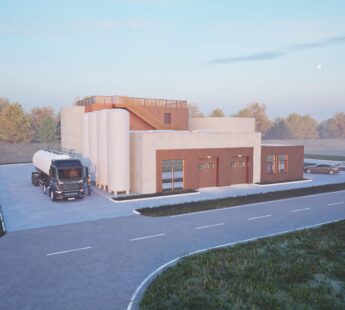News
To the last drop: Why we need sustainable groundwater management


Some of the world’s groundwater is so old, it originally fell as rain thousands of years ago before modern human settlements evolved.
However, the sources of water supplies for societies vary across the world. In some places, surface water is a major water source, supplied either from natural lakes and rivers or from water stored in dams. In other parts of the world, water supply is based on groundwater.
The main advantage of using groundwater as a single source or supplementing it with other water sources is that aquifers are less sensitive to seasonal changes in water consumption and variations in climatic conditions. Also, groundwater does not evaporate as easily, so it can be used for many centuries.
Today, stable freshwater supplies are ensured through modern extraction methods and contemporary pumping technology in many parts of the world.
And yet as climate change increases the frequency of droughts and unseasonal rainfall, it’s vital to focus on ensuring a sustainable, secure water supply – and access to water - at regional and local levels for generations to come.
Four pillars of good groundwater management
To sustainably manage groundwater we need to understand groundwater quantity and quality; protect against pollution; avoid overdraft; and ensure equal access. Let’s unfold these imperatives:
- Understand quantities, locations, and flow patterns: The quantity of groundwater in a particular geography is never stable but depends on the amount of rain and surface water that soaks into the ground. Water never stands still; it always finds a way to flow where possible. This means mapping and analysing groundwater quantities and flow patterns is a recurrent and important task, especially in coastal areas, where saltwater intrusionneeds to be mapped and taken into consideration. Hence, the first step toward sustainable groundwater management is to obtain enhanced data and understanding of the extent and conditions of the aquifer system.
- Protect against pollution: Aquifers used for abstraction are often thought to be thoroughly protected from pollution. However, if pollution occurs, restoring an aquifer can often be a complicated process as damages are long lasting. Pesticides from agriculture and industrial chemicals, such as Per- and Polyfluoroalkyl Substances (PFAS) are among the most critical polluters. This must be addressed through regulation and advanced treatment technologies. Also, bacterial pollution from leaking sewer systems poses a significant threat to the drinking water quality and human health all over the world. Improved hygiene during operation and maintenance and proper long-term asset management are therefore important focus areas as well.
- Avoid overdraft: Overdraft occurs when the average annual amount of groundwater extraction exceeds the average annual supply of water to the basin. Effects of overdraft can include saltwater intrusion, land subsidence, groundwater depletion, and/or chronic lowering of groundwater levels. In California, US, the Sustainable Groundwater Management Act (SGMA)directs the Department of Water Resources to identify groundwater basins and sub-basins in conditions of critical overdraft. Ramboll is currently helping develop the datasets neededto successful implement the SGMA.
- Ensure equal access: According to the US Centers for Disease Control and Prevention, an estimated 2.2 billion people around the world need access to safely managed drinking water, including 884 million people who lack basic drinking water services. Ensuring equal and adequate access to groundwater resources should be a core political priority in all societies, especially in countries where surface water is a primary freshwater source.
Let’s take South Africa as an example: In 2018, Cape Town faced its well-known ‘Day Zero,’ signifying the day their water supplies were expected to run dry. Though Cape Town never actually reached Day Zero, the issue has not yet been resolved, and South Africa is still at high risk of experiencing water shortages.
For nations dependent on surface water, Denmark is often seen as an inspiration due to its clean tap water and groundwater mapping approach. To ensure access to safe and clean water in the future, South Africa has joined a collaborative program with Denmark called the ’Strategic Water Sector Cooperation,’ funded through the Denmark’s Ministry of Foreign Affairs. As part of the program, Ramboll is focusing on several projects aiming to display opportunities to manage and use groundwater in South Africa.
Integrated water management
Groundwater is part of the greater water cycle. It cannot be managed as a siloed resource. Therefore, it’s important to use a holistic perspective to understand the various water supply sources available as ‘one source’ and enable a more integrated, sustainable management style for an area’s overall water systems.
Groundwater aquifers are naturally influenced by surface water above, such as rivers and wetlands, as well as by specific land use and nearby coastal and marine environments. In some instances, groundwater can naturally contain elements that make it unsuitable for drinking, for example, high levels of fluoride or arsenic.
Since we cannot always rely on nature for management, adaptive measures to secure a balance between abstraction and recharge, such as managed aquifer recharge (MAR), are taking place across the globe.
Groundwater quick facts
Land subsidence is a gradual settling or sudden sinking of the Earth's surface. Think landslides, sinkholes.
Performing Managed aquifer recharge (MAR) means recharging surface waters into the aquifer to obtain a balanced water account. MAR is an increasingly common practice and can play a significant role for some countries considering sustainable groundwater management.
MAR has great potential for infiltrating treated wastewater from cities or companies. This sophisticated variation of water reuse has been used for years and in many parts of the world. However, the potential of reused water has not yet been fully unleashed and innovative technologies for efficient MAR of treated wastewater are still in development.
Overdraft occurs when, over a period of years, more water is pumped from a groundwater basin than is replaced from all sources - such as rainfall, irrigation water, streams fed by mountain runoff and intentional recharge.
Saltwater intrusion is the movement of saline water into freshwater aquifers, which can cause contamination of fresh drinking water sources in a region and other problems. It occurs naturally in aquifers in coastal areas due to the hydraulic connection between ground and sea water, which happens underneath the surface of the earth.
Blog post by Søren Hvilshøj, International Water Director at Ramboll. The blog post is part of a series of perspectives leading up to the IWA World Water Congress & Exhibition in Copenhagen in September 2022. Link to original content published via Ramboll on UN World Water Day here.
You should consider reading
Perspective
Energy efficiency in industry
+1















